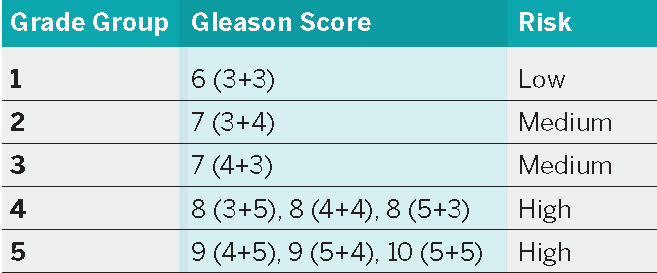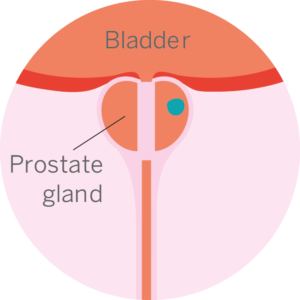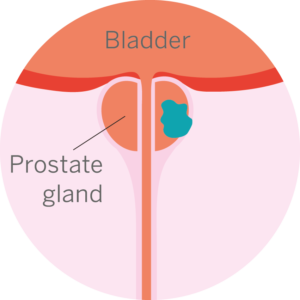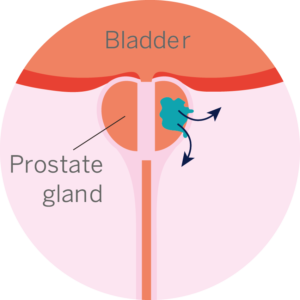If prostate cancer is detected, your doctor or surgeon will need to determine which stage and grade it is, to decide which treatments will be available.
Staging and grading
Understanding the stage and grade of your prostate cancer
Cancer Grading (Gleason Score)
How aggressive is the cancer?
The biopsy is used to produce your Gleason Score. Prostate cancer tissue can look like normal prostate tissue – the extent to which the cancer tissue looks like normal tissue is called the cancer grade. Low-grade cancer looks most like normal tissue and high-grade cancer looks least like normal tissue. In general, the lower the grade, the less aggressive the cancer and the less likely it is to shorten life expectancy. For prostate cancer, the Gleason grading system is normally used. Grade 3 is the least aggressive and 5 is the most aggressive. Because prostate cancer is very variable in appearance, the first grade is given to the most frequent appearance and the second grade to the second most frequent appearance under the microscope. The two Gleason grades are then added together to give the Gleason Score, which ranges from 6–10.

Cancer Staging (TNM-stages)
How far has the cancer spread?
Prostate cancer is described as ‘localised’, ‘locally advanced’ disease or ‘advanced’. It starts with changes in the cells of the prostate. The cells form a lump that may eventually be felt in a physical examination. Surgeons describe how far the cancer has spread according to ‘TNM stages’, standing for primary Tumour, Nodes and Metastasis. The T stage tells you the size of the tumour and is usually detected using a DRE or an MRI scan. The N stage tells you whether the cancer has spread to the lymph nodes and is usually detected using an MRI or CT scan. Nodes can be N0 (negative) or N1 (positive). N1 indicates that the cancer has spread outside the prostate to one or more local lymph nodes. The M stage tells you whether the cancer has spread to other areas in the body and it is usually detected using a bone scan. Metastasis can be M0 (negative) or M1 (positive). M1 indicates that the cancer has spread to other parts of the body. Around 60% of patients are diagnosed with early disease and 40% are diagnosed at a later stage. However, even when prostate cancer has reached the late stage, it may still be possible to slow down its growth.
T1 Stage

Early prostate cancer which can only be seen under the microscope
T2 Stage

Early prostate cancer which can be felt by rectal examination
T3 Stage

Locally advanced prostate cancer which may cause urinary problems
T4 Stage

Late prostate cancer probably with secondaries or metastases